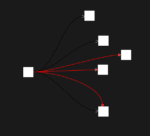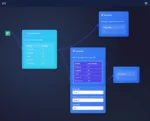
by tyler garrett | Jun 12, 2025 | Data Processing
In an era where flexibility and agility are the cornerstones of competitive advantage in data-driven businesses, software architectures need to evolve beyond rigid designs. To strategically manage complexity, we must employ designs that empower our systems to dynamically adapt processing strategies without extensive redevelopment. One influential approach that allows us to achieve high modularity and maintainability within our applications is the Factory Pattern. By leveraging Factory Patterns, businesses harness the adaptability to inject dynamic processing logic effortlessly, enabling innovative capabilities, improving developer productivity, and facilitating rapid responses to market shifts. Let’s explore how embracing Factory Patterns can revolutionize your company’s software strategies, providing an invaluable competitive edge in data analytics and software innovation.
Understanding the Factory Pattern and Its Strategic Advantage
What Exactly is the Factory Pattern?
At its core, the factory pattern is a creational design pattern used extensively in software engineering, offering a sophisticated yet straightforward method for object creation. Rather than explicitly instantiating concrete classes, applications rely on factory interfaces to manage creation logic and return instances of objects based on defined conditions or configurations. Using the factory pattern, developers abstract object creation, significantly reducing dependency coupling and promoting higher modularity and configurability within software systems.
The strategic advantage of employing the factory pattern becomes evident when considering the rapid pace of innovation required by modern data analytics platforms. By encapsulating creation logic within factories, developers can dynamically introduce new processing components without needing widespread codebase alterations. Such flexibility positions businesses to adapt rapidly, scale more effectively, and maintain robust and easily manageable software architectures.
Whether it’s facilitating driving business growth with actionable insights, addressing new market requirements, or responding to shifting business rules, the factory pattern provides the agility required by data-driven organizations. Furthermore, the abstraction inherent in the factory pattern aligns seamlessly with broader software strategies, including innovating inside legacy systems without necessitating complete system replacements.
Dynamic Injection of Processing Logic with the Factory Pattern
Leveraging Factories to Adapt to Evolving Data Needs
One prevalent dilemma many organizations face is managing increasingly sophisticated data logic that must adjust dynamically to business conditions or external events. Achieving this without incurring costly maintenance overhead or slowing development velocity is paramount to agile businesses. By leveraging the factory pattern, applications effortlessly inject or alter processing logic based on context and user-defined configurations. This capability allows your development teams to dynamically switch between processing strategies and algorithms while maintaining code clarity and simplicity.
A compelling use case involves scenarios where diverse data entity processing requirements must be accommodated seamlessly. Consider entity resolution tasks within data analytics, where various algorithms are employed depending on data quality, sensitivity, or client needs. Using the factory pattern, organizations could effortlessly invoke the most appropriate entity resolution fuzzy matching algorithms at runtime, dynamically optimizing data integration pipelines for maximum accuracy and efficiency.
Similarly, the factory pattern provides essential flexibility in ETL (Extract, Transform, Load) workflows. Organizations frequently must transform data into formats optimized for downstream consumption, a concept extensively explored in our previous article: ETL in Data Analytics: Transforming Data for Usability. With factories, data engineers effortlessly orchestrate complex transformation logic that adapts dynamically to data formats or contextual conditions, thereby improving overall operational agility.
Reducing System Complexity and Facilitating Reusability
A Robust Solution to Reduce Complexity
Growing modern software systems inherently involve evolving complexities, yet well-executed design patterns can substantially mitigate the cognitive burden for developers. The factory pattern significantly simplifies complex codebases by abstracting repetitive and intricate object creation logic into dedicated components. These encapsulated factory components can then consistently apply configurations, rules, and invariants, simplifying code understanding, debugging, and maintenance.
Utilizing factories also empowers developers to maximize reusability across pipelines or data flows. Employing shared factory logic across multiple use cases promotes consistency, greatly simplifies maintenance and updates, and increases developers’ productivity as new requirements arise. Consider the benefits when adopting generic pipeline templates with configuration inheritance—factory patterns harmoniously complement these concepts by standardizing object creation logic consistently across numerous data processing routines.
An additional advantage arises in the management of system permissions and security models. Employing factories with appropriate underlying logic enables intelligent grant management, streamlining granting privileges and permissions in SQL databases and other storage solutions consistently and reliably across data analytics landscapes.
Enhancing Data Governance and Policy Compliance Through Factory Pattern
Dynamic Policy Enforcement through Context Awareness
Today’s data management landscapes inevitably revolve around adherence to strict privacy, security, and usage policies, a reality requiring dynamic approaches. Factories can strategically address these challenges by injecting dynamic data processing logic compliant with regulatory frameworks and organizational policies. Such factories simplify compliance, seamlessly integrating data governance rules or privacy management directly within data flows and processing methods.
Factories uniquely accommodate such sophisticated needs by orchestrating conditional logic or specialized processing variations based on context-aware information. A robust approach described in detail on our blog post on context-aware data usage policy enforcement aligns perfectly with factory pattern principles. Implementing factory methods allows for rapid shifts in enforcement logic, maintaining strict compliance without impeding data analytics productivity or innovation pace.
Moreover, these flexible factory approaches further enable proactive solutions to privacy and security governed data exchanges or handling, as outlined in our insightful article, Examples Where ETL Supports Data Governance and Security. Enterprises strategically leveraging factories enjoy greater confidence in their ability to comply dynamically with constantly evolving policy requirements, ensuring data protection measures remain seamlessly ingrained in the software architecture.
The Next Evolution: Factory Pattern in Batch and Real-time Processing
Integrating Flexibility into Real-time and Historical Data Flows
There is growing organizational recognition of the benefits offered by real-time streaming analytics compared to traditional batch processing models. Factories inherently enable transitioning workloads from comfortable batch processes to more dynamic real-time streams, enabling a new level of agility for enterprises to respond immediately to changing data contexts. We’ve previously discussed evolving data processing paradigms extensively in stream processing over batch analysis.
Simultaneously, factory patterns remain equally influential for historical data management strategies. Organizations frequently face the challenge of efficiently integrating and processing large historical datasets. Factories smoothly adapt and inject backfill strategies within dynamic batch-based processes, as thoroughly described in Backfill Strategies for Historical Data Processing, making large-scale historical data consolidation far simpler and significantly more maintainable.
By deploying factories, businesses strategically future-proof their data processing pipelines for both high-speed streaming transformations and historical data management settings seamlessly. Such agility equips organizations to quickly harness innovative changes and capture competitive advantages within today’s rapid-paced data analytics markets.
Conclusion: Unlocking Continuous Innovation with Strategic Factory Patterns
In summary, implementation of the factory pattern positions software solutions uniquely capable of adapting readily to the increasingly sophisticated demands of modern analytics infrastructures and user requirements. Factory Patterns help drive operational flexibility, minimize complexity costs, and bolster your organization’s adaptive capacity as competitive requirements continue to evolve rapidly. Adopt these strategic factory pattern advantages within your software architecture today, and proactively innovate to sustain business agility and long-term competitive resilience.
To learn more about strategically optimizing your software architecture and data analytics implementation, connect with our experts on PostgreSQL Consulting Services to advance your innovation journey.

by tyler garrett | Jun 12, 2025 | Data Processing
Imagine standing beside a massive digital river where millions of data points flow continuously and swiftly every second. Each data point marks an exact moment, carrying critical insights vital for businesses to stay competitive, adaptive, and innovative. Enter Complex Event Processing (CEP)—a cutting-edge solution in modern analytics that empowers organizations with real-time pattern recognition capabilities. By identifying meaningful correlations and recognizing patterns in large data streams, CEP technology goes beyond traditional data analysis; it leverages contextual intelligence, facilitating critical decisions faster and more accurately. In this blog, we’ll explore what Complex Event Processing is, its practical applications, and how leveraging CEP helps your business gain strategic advantages from its data ecosystem.
Understanding Complex Event Processing (CEP)
Complex Event Processing (CEP) refers to advanced analytic techniques that continuously analyze streaming data in real-time or near-real-time scenarios, seeking patterns, correlations, and sequences of events. Unlike traditional batch-processing analytics, CEP excels at capturing events as they occur, making it ideal for operational intelligence tasks and real-time decision-making.
Core to CEP is the idea of identifying complex patterns within streaming data—a task increasingly crucial in our hyper-connected, always-online world. Data arrives from various sources such as IoT sensors, transaction logs, social media, financial markets, and user interactions. CEP systems rapidly correlate these events, present insights dynamically, and trigger immediate actions based on pre-defined rules and conditions.
For example, consider an online financial trading scenario: patterns, such as sudden price movements or trading spikes, are recognizable through CEP-driven analysis. By pinpointing recurring patterns swiftly, businesses gain competitive advantages by proactively responding to threats or opportunities, rather than adhering strictly to post-event reactive measures. Adopting these advanced analytics methodologies sharpens organizations’ innovative edge, positioning them ahead of the market curve.
Major Components of CEP Technology
Event Sources and Streams
Central to any CEP-driven system are event sources that continuously generate streams of information. These data streams include structured data such as transactional databases (like those managed efficiently with reliable MySQL consulting services) and unstructured data from IoT, log files, and social networks. Identifying, aggregating, and normalizing data sources is fundamental, creating a robust foundation for rapid and efficient event analysis.
Selecting appropriate event sources builds context and enhances analytical relevance—transforming data streams into manageable, understandable sequences that inform actionable insights. Organizations navigating complexity with CEP must clearly define which data to listen to and aggregate, optimizing downstream analytic efficiency and reducing noise.
Event Processing Engine
The event processing engine is the heart of any CEP solution. Its principal function is to ingest, process, analyze, and recognize patterns in real-time data streams, following complex logical rules. Employing innovative big data technology, these engines can handle vast amounts of incoming data swiftly, offering zero-latency pattern recognition for immediate insight generation and actionable business intelligence.
CEP engines apply intelligent analytics and algorithms, such as filtering, correlation, aggregation, and machine learning models, to event streams. These engines empower companies to proactively detect opportunities, rapidly mitigate risks, and respond to key events instantaneously. Investing effort into choosing and customizing the right CEP engine ensures organizations receive tailored, timely insights to meet specific business objectives.
Event-driven Architecture (EDA)
An event-driven architecture enables communication among different software components through events—allowing unprecedented flexibility and scalability for dynamic environments. Building on this modern architectural approach, organizations use CEP to trigger processes and actions automatically, boosting efficiency and accelerating decision-making.
Event-driven design architecture complements methodologies such as event sourcing implementation, which tracks granular event changes for auditable and reliable historical data pipelines. EDA adoption offers adaptability, responsiveness, and efficiency, making it the perfect choice to integrate with CEP systems and enable real-time reaction capabilities.
Practical Applications of CEP in Industries
Financial Markets and Trading
In financial markets, milliseconds matter. CEP helps detect complex trading patterns, fraudulent activities, and market fluctuations with incredible precision and speed. Its capability for real-time analytics allows firms to evaluate risks proactively, seize opportunities rapidly, and achieve regulatory compliance automatically—vastly improving overall efficiency.
Integration with AI-driven analyses, as discussed in our article about AI and ML revolution, further enhances CEP’s capability in financial sectors. Predictive analytic models and algorithms facilitate effective trading strategies by continuously analyzing market trends and behaviors, giving firms strategic industry advantages.
Telecommunications and Networking
For telecommunications enterprises, optimizing network performance depends significantly on efficient event detection and management. CEP employs real-time network performance event data analysis, quickly identifying anomalies, ensuring Quality of Service (QoS), minimizing downtime, and satisfying customer expectations.
Sophisticated CEP systems integrated into telecom operations proactively detect potential problems, simplify troubleshooting, and optimize network deployments. Providing real-time visibility helps network administrators respond rapidly, preventing disruptions and maintaining system reliability and customer trust.
Retail and E-commerce
Complex Event Processing helps retailers and e-commerce platforms to interpret customer behaviors instantly for personalized customer engagements, pricing decisions, and inventory management. Combining CEP with techniques like market trend analysis, retailers enhance demand forecasting and optimize inventory strategies in real-time.
Retailers gain market leadership by detecting emerging customer sentiment and shopping patterns, employing powerful analytical toolkits such as in our previous guide on sentiment analysis in Python using NLTK. Harnessing these CEP-powered insights transforms customer relationships through tailored experiences.
Key Factors in Implementing CEP Successfully
Data Quality and Conformity
Success with CEP hinges on rapidly analyzing accurate, timely data. Organizations must embrace disciplined data quality management practices, such as utilizing proper conformity dimension management to maintain standardized, reliable datasets. High-quality streaming data allows improved accuracy in event pattern detection, directly affecting system accuracy and usefulness of detected insights.
Establishing robust standards ensures events align correctly across the enterprise, facilitating dependable correlations across diverse data landscapes. Investing in strong data governance practices lays the foundation for effectively integrating CEP, streamlining integrations, and minimizing errors.
Scalable Infrastructure for Real-time Analytics
Real-time analytics inherently require scalable, responsive technology resources — achieving scale and performance is crucial. Companies adopting CEP systems should strategically architect infrastructure, selecting technologies optimized for handling and analyzing continuous datasets.
Whether implementing high-performance relational databases through expert database consulting, leveraging cloud solutions or exploring advanced technologies like vector databases for embedding-based applications — scalable infrastructure undeniably drives efficient CEP implementation that can evolve alongside business demands.
Effective Visualizations and Dashboarding
Real-time functionality demands sophisticated visualizations for quick interpretations and faster decisions. Prioritizing effective visualization design principles, such as those discussed in our analysis of chart aspect ratio considerations, ensures effective communications of complex event analysis to stakeholders vividly and instantly.
Customized visual dashboards empower decision-makers, converting raw event streams into meaningful visual stories. Effective deployment of such dashboards, combined with CEP solutions, significantly enhances business insights utility and accelerates comprehension speed.
Conclusion: CEP—Your Competitive Advantage in Real-time Analytics
Complex Event Processing represents a dynamic shift toward real-time, proactive problem-solving. Leveraging CEP technology, organizations no longer merely react but predict and respond proactively—unlocking innovation and strategic value. Strategically embracing CEP methodology positions businesses for marketplace agility, increased operational efficiency, and insightful decision-making unmatched through traditional analytical approaches.

by tyler garrett | Jun 12, 2025 | Data Processing
In today’s high-speed tech landscape, your data strategy directly impacts your ability to innovate. As your organization scales, ensuring clean, maintainable code and efficient data access becomes critical for driving accurate insights and informed decisions. Enter the repository pattern—a powerful architectural design that greatly simplifies data access layers, streamlines development workflows, and ensures your team can adapt rapidly to evolving information needs. In this article, we’ll clearly illustrate why effectively leveraging the repository pattern enables robust, secure, and maintainable data-centric solutions across your applications, data platforms, and analytical pipelines.
Understanding the Repository Pattern: Why Does It Matter?
The repository pattern is a fundamental concept in software architecture, promoting a clean separation between data access logic and business logic. Simply put, a repository serves as an abstraction layer, centralizing all data operations in one clearly-defined structure. This practice significantly reduces database-related complexities, isolates potential changes, and enhances the maintainability of software solutions. Instead of scattering database queries and operations across an application, employing repositories means developers focus more on core business logic, reducing redundancy, and simplifying the development lifecycle.
Data-centric businesses—especially those invested in data analytics and Power BI consulting services—benefit exponentially by implementing the repository pattern. It results not only in cleaner, more manageable code but accelerates innovation and decision-making. For data-driven organizations, effective use of the repository pattern can mean faster iterations, fewer errors, and greater clarity surrounding data processes. This becomes increasingly beneficial as systems grow in scale and the complexities of handling multiple data sources, APIs, and third-party integrations proliferate.
Adopting a strategic architectural approach, such as the repository pattern, aligns perfectly with modern business objectives. Rather than investing effort into resolving recurring data management challenges, leveraging repositories empowers development teams and data analysts alike with rapid access to reliable and well-structured data sources. Consistency in data access patterns fosters greater productivity, clarity, and agility in addressing growing business needs.
Key Benefits of Implementing the Repository Pattern
Decoupling Data and Business Logic
One significant advantage of the repository pattern is its ability to decouple data access from core business logic, making it easier to isolate data-related changes without affecting underlying workflows. Imagine a scenario where your organization decides to transition from a traditional SQL database to a NoSQL solution or cloud-based storage system. Leveraging a repository pattern facilitates the seamless transition of data sources without the need for extensive rewriting of application or analytics logic, therefore significantly preserving your organization’s technical investments. This clean separation allows businesses to remain agile, rapidly pivoting strategies to take advantage of evolving technology.
Furthermore, by clearly separating your data access infrastructure from business operations, your organization is better positioned to integrate technologies responsibly into your analytics systems. This benefit directly complements data engineering competencies, as illustrated in our data engineering case study illustrating the power to scale to 1 billion events daily.
Enhancing Testability and Reliability
Testing becomes significantly more straightforward when the repository pattern is implemented correctly. Mocking and unit testing data interactions become intuitive and manageable. Without intertwined logic and database queries locked into functional code, developers and QA professionals can quickly locate and resolve issues as product enhancements are delivered to business decision-makers.
This enhanced testability ensures high-reliability systems, vital in environments where accurate and timely data insights directly influence strategic decisions. Implementing the repository pattern fosters a proactive approach to editing and auditing data, aligning seamlessly with initiatives such as our detailed guide on data trust implementation methodologies, ultimately boosting confidence in data accuracy and facilitating protected information sharing.
Practical Examples of Repository Pattern Use Cases
Streamlining Data Pipelines and ETL Processes
From processing real-time data streams to nightly ETL jobs, leveraging the repository pattern simplifies complex data integration scenarios. Clear definition and abstraction through repositories enable smoother data pipeline orchestration, enhancing data clarity and making transformations and data loads fully modular and testable. For example, data engineering teams can vastly simplify complex ETL tasks by strategically applying principles described in our comprehensive guide about streamlining data pipelines with Node.js.
Whether utilizing open source platforms, commercial solutions, or hybrid approaches, the repository pattern efficiently abstracts underlying complexities, letting developers closely align with business operations rather than tactical, low-level intricacies. Consulting our analysis on open source versus commercial ETL solutions further clarifies how such patterns promote flexibility across tooling choices.
Empowering Advanced Visualizations and Forecast Accuracy
Superior data visualization and forecasting hinge on structured and maintainable data layers. Employing the repository pattern fosters reliable data structures required to achieve powerful visualization outcomes, helping stakeholders better interpret complex information and facilitate strategic decisions. It also lays the foundation for precision analytics such as the techniques explored in our article on accurate demand prediction for unlocking business success.
In visualization-intensive environments—including categorical data flows and multidimensional analysis—a well-maintained repository facilitates structured data provision for advanced visual representations such as the powerful technique explained in our examination of Parallel Sets for visualizing categorical data flows.
Repository Pattern Best Practices and Insights
Maintain Consistent Naming Conventions and Abstraction Levels
Consistency in naming conventions and clear abstraction layers can significantly amplify your team’s productivity. A well-structured naming context allows both technical and non-technical stakeholders to communicate clearly about data requirements, accelerating feature delivery and analytical work. Ensure entities, interfaces, and repository classes follow the defined naming conventions, providing legibility and easier developer onboarding.
Besides maintaining semantic consistency, limiting the level of abstraction used within repositories is equally vital. Repositories should maintain sensitivity to their critical responsibilities—data provision and retrieval. Overly elaborate abstractions can introduce unnecessary complexity, negatively impacting maintainability and clarity.
Secure Data Access Through Clear Interfaces
Security, accessibility, and permissions management are integral to effective repository pattern use. Clearly-defined repository interfaces allow developers to structure controlled and secure data access for internal software systems and analytics platforms. Centralizing security logic helps ease the management of user controls and requisite access checks consistently and coherently across complex systems. It also facilitates compliance with modern data governance regulations, enhancing data confidence, and trust across your organization’s analytics environment.
Embracing the Repository Pattern: A Strategic Advantage for Innovation
Adopting the repository pattern in your organization’s technology strategy equips your team with fundamental advantages in agility, clarity, and maintainability. Lean coding practices brought by repository-centric design enable your organization to confidently leverage data analytics, business intelligence, and technical innovation effectively and reliably across multiple platforms.
As your data assets grow increasingly complex, the repository pattern provides a stable architectural foundation designed precisely for continuous flexibility and rapid innovation. From tactical development tasks to high-stakes strategic analytics scenarios, employing repository-driven design offers high returns on investment and positions your organization for sustained technological advantage.
If your organization’s goals require powerful analytics and efficiently managed data architectures, consider strategically partnering with us. Learn more about how our team at Dev3lop can help your organization leverage the repository pattern and other advanced solutions through our flexible Power BI consulting services offerings today.

by tyler garrett | Jun 12, 2025 | Data Processing
In the current era of big data and complex interconnected systems, graph analytics plays an increasingly critical role in understanding the nuanced relationships within data. As businesses grapple with more extensive, intricate systems and data sets, the method you choose to store and represent your graphs becomes paramount. Regardless of the sector—be it finance, sustainability initiatives like Austin’s urban environment improvements, or privacy-driven analytics using advanced record linkage techniques—making informed decisions about data structure strategy is non-negotiable. A graph’s scale introduces a particular dilemma: Should organizations rely on adjacency lists or adjacency matrices? Each option brings unique trade-offs. As technical strategists specialized in data analytics and software innovation at Dev3lop, we find it’s crucial for decision-makers to revisit these choices regularly. Let’s navigate this complex topic and break down which approach is better when working with graphs at scale.
Adjacency Matrices: A Structured Simplicity
At first glance, adjacency matrices appear exceptionally straightforward—a simple two-dimensional array clarifying whether connections between nodes exist. Rows and columns cleanly represent graph vertices, with matrix values clearly indicating edges. This structured representation allows quick lookups for verifying connections between any two nodes, making it especially attractive for tightly connected graphs (dense graphs).
However, simplicity doesn’t always scale smoothly. With growing node counts, a graph’s adjacency matrix rapidly expands. Given the square growth pattern (N²), the matrix quickly becomes heavy on space consumption, challenging businesses constrained by memory limitations. Even more costly is that adjacency matrices tend overwhelmingly to contain zeros for sparse graphs—meaning wasted storage and inefficiencies take hold as scalability needs arise in business contexts. This underutilization highlights challenges enterprise stakeholders face when making technology choices, especially when misalignment leads organizations to mistakenly start blaming the data team for project inefficiencies.
On the positive side, adjacency matrices powerfully support matrix algebra operations, leveraging optimized mathematical libraries. For businesses actively using machine learning techniques like graph embeddings to gain insights beyond basic keywords—such as described in our post on semantic embeddings for business intelligence beyond keywords—this can translate into actionable analytic opportunities.
Strengths of Adjacency Matrices:
- Reliable query speed for edge connectivity checks (O(1)).
- Easier matrix algebra applications enabling robust mathematical and machine learning operations.
- Constant-time edge lookups ideal for dense graphs.
Weaknesses of Adjacency Matrices:
- High storage overhead, particularly problematic for sparse or huge-scale graphs.
- Expensive to insert or remove nodes dynamically.
- Limited efficiency when processing sparsely connected networks at extreme scales.
Adjacency Lists: An Efficient, Dynamic Alternative
An adjacency list—a classic data structure favored by software engineers, data architects, and technical strategists—uses a collection (usually a dictionary or a map) of lists representing nodes and their immediate connections. As such, it effectively accommodates sparse graphs, requiring memory only proportional to edges rather than vertices squared. Businesses scaling rapidly, dealing with dynamic or user-generated networks, or applying context-aware data usage policies, find adjacency lists particularly relevant.
Adding and removing nodes or edges in adjacency lists is typically seamless, making them tremendously efficient for dynamic, evolving graphs. Real-world business graphs, including social interactions, semantic networks, transaction flows, and urban planning relationships—as discussed in our article on analytics-driven sustainability practices—benefit significantly from this flexibility and lower overhead.
Still, adjacency lists are not without their downsides. Checking connectivity between two arbitrary nodes requires traversing, leading to less predictable performance—an important consideration. Companies addressing API responsiveness, data visualization workflows, or advanced BI analytics (services we provide expertise through Advanced Tableau Consulting) must consider these latency implications.
Strengths of Adjacency Lists:
- Space-efficient, especially ideal for sparse graphs.
- Flexibility and ease in inserting and removing nodes, ideal for dynamic business environments.
- Lower overhead makes scaling with expansive datasets feasible and cost-effective.
Weaknesses of Adjacency Lists:
- Slower lookup times for direct node adjacency queries (compared to matrices).
- Inefficient for dense graphs requiring frequent edge relationship checks.
- Complexity in performing matrix-based computations and algebra operations.
Balancing Performance: The Right Choice For Your Business Requirements
Scalable graph implementations critically depend upon matching the chosen data structure to your application’s real-world requirements. When immediate direct connectivity checks matter—as they often do in low-latency network analysis or real-time transactional finance—the adjacency matrix might leverage performance benefits sufficiently to justify cost implications. Contrarily, when dealing with rapidly evolving, sparsely populated relationships, adjacency lists offer superior dynamism, saving computing resources better utilized in processing and delivering insights.
Consider the nuances mentioned in our post “The Batch Size Dilemma”, where careful analysis of systems’ throughput and optimization considerations can save costs and boost efficiencies significantly. Likewise, businesses with sophisticated ecosystems integrating global data flows might weigh the trade-offs between sparsity (lists) versus dense operations (matrices) as rigorously as they do with visualization ethics and preventing misleading chart designs.
Ultimately, making informed strategic technology choices reflects a deep understanding of both representation methods and aligns their strengths with your organization’s ultimate goals. Our seasoned strategists within Dev3lop frequently emphasize these nuances, guiding teams beyond superficial analytical strategies towards mature, sustainable technologic choices.
Combining Approaches: Hybrid Methods in Advanced Graph Analytics
Forward-thinking solution architects and data scientists increasingly explore hybrid methods intelligently merging adjacency lists and matrices to exploit respective advantages. These combined strategies integrate space-efficient adjacency lists with specialized, domain-driven adjacency matrix usage tuned for algorithms requiring dense mathematical properties. Such hybrid approaches are frequently deployed within advanced industries, including semantic embeddings, privacy-preservation methods, and context-aware policies explored comprehensively within our blog content—including detailed coverage of storytelling through data visualization.
This convergence can lead to streamlined API-driven data facilities, improved application responsiveness, and optimized performance across analytics platforms. Leveraging hybrid techniques strengthens API systems quickly bringing value to businesses, as explained in our piece about driving value in quick API consulting engagements.
By embracing hybrid data representations, enterprises may significantly reduce overall system complexity, improve performance adaptability, and make thoughtful use of computational and storage resources. Adopt this strategic lens into your technology management now, enabling your data systems to efficiently scale alongside growing business complexity and data interconnectedness.
Conclusion: Strategic Graph Representation for Scalable Success
Understanding the distinct implications between adjacency matrix and adjacency list representations isn’t merely theoretical decision-making—it’s fundamental to high-performing, scalable analytic applications. As technical strategists skilled in advanced analytics and innovation, we consistently encourage you to reevaluate and consciously align your business’s technology stacks with your specific needs.
The evolving landscape of data analytics and technology demands dynamic adaptations, strategic selections, and ongoing innovation. By clearly grasping adjacency lists versus adjacency matrix representations at scale, you empower your enterprise to leverage data strategically, effectively driving innovation, optimization, and ultimately: business success.

by tyler garrett | Jun 12, 2025 | Data Processing
In today’s digitally connected economy, your data pipeline is not simply an operational asset—it is the lifeblood of informed decisions, innovation, and competitive advantage. Yet many organizations continue to grapple with monolithic pipeline architectures that spiral into unmanageable, rigid systems incapable of adapting to the pace of change. Enter Hexagonal Architecture, otherwise known as Ports & Adapters, an architectural paradigm transforming pipelines into modular, flexible, and sustainable infrastructure. Whether you’re considering revamping your analytics infrastructure, scaling your operations, or experimenting with new technologies like artificial intelligence, adopting Ports & Adapters ensures that your architecture isn’t just ready for today—it’s ready for a bold digital future. Let’s explore what exactly makes Hexagonal Architecture so compelling for data-intensive applications and how it can elevate your pipeline to power true innovation.
Understanding Hexagonal Architecture in Data Pipelines
Hexagonal Architecture, also widely recognized as Ports & Adapters architecture, uniquely challenges the traditional, layered approach. Initially conceptualized by Alistair Cockburn, it promotes designing the application core at the center, decoupled entirely from external factors like databases, user interfaces, or APIs. Instead of tightly coupled integrations, this model advocates clearly defined interfaces—known as ports—allowing external adapters the exclusive ability to communicate with the internal core logic. Each adapter communicates through the same interface specification, ensuring seamless integration and robust isolation.
Applied to data pipelines, this approach means establishing and maintaining clear and standardized contracts between your data processing logic (the pipeline core) and all external components like data sources, sinks, messaging queues, and APIs. Anything outside your pipeline becomes neatly compartmentalized, allowing your internal analytic logic to be completely isolated from changes or incompatibilities that occur in external systems. Effectively, you’re building flexibility and robustness into the foundation of your pipeline architecture.
When we advised clients on architecture modernization, one frequent pattern we encounter is companies struggling with tangled integrations. Shifting towards Ports & Adapters helps these organizations transition smoothly to scalable streaming methods or batch strategies, such as choosing between tumbling vs. sliding streaming windows. Moreover, clearly defined ports enhance your capability to systematically manage your application logic, whether it relates to analytics, test data management, or AI-driven agent services.
Benefits of Leveraging Ports & Adapters in Your Pipeline
Enhanced Flexibility and Scalability
Adapting Hexagonal Architecture significantly boosts flexibility. By creating portable, reusable components connected via standardized interfaces, your pipeline can scale reliably without imposing massive rework behind the scenes. Whether integrating new data sources, experimenting with innovations or AI tools, or adapting interfaces rapidly in agile contexts, the ports-and-adapter pattern acts as your pipeline’s versatile toolkit. Importantly, this adaptability helps your team quickly test assumptions when innovating or deploying experimental AI tools like AI agent consulting services.
Improved Resilience and Fault Tolerance
A crucial advantage of decoupled architecture is enhanced fault resilience. Your pipeline core remains mostly unaffected during external disruptions, significantly reducing downtime impact, and improving the end-user experience. Should an external component fail, Ports & Adapters architecture isolates the issue, limiting operational fallout. Additionally, by implementing data pipeline resilience frameworks like the circuit breaker pattern, Hexagonal Architecture ensures you can engineer proactive monitoring and healing mechanisms into critical adapters.
Stronger Governance and Data Management Capabilities
As data governance grows increasingly essential, clear and standardized entry and exit points simplify lineage tracking. Your organization can achieve robust lineage tracking at scale, without sacrificing throughput or operational efficiency. By encapsulating data flows and controlling interfaces through adapters and ports, audit and governance functions are streamlined, facilitating compliance, access control, and consistent security policies across every interaction within the digital environment.
Practical Implementation Considerations of Hexagonal Pipelines
Transitioning to Hexagonal Architecture requires deliberate planning and disciplined execution. Begin by clearly defining the core of your pipeline, identifying business rules, analytic computations, transformation logic, and essential calculations. Then, specify ports to handle incoming and outgoing data exchange. This clarity prepares your organization to embrace diversified adapters—supporting everything from SQL databases that require granular privilege management to complex third-party integrations requiring tokenization techniques like Payload Tokenization for secure data processing.
A core benefit is simplified testing. By clearly defined interfaces, your test cases gain straightforward alignment—separating integration tests from business logic verifications. You can rapidly mock external dependencies, speeding development and significantly reducing the noisy issues often encountered during complex production deployments. Moreover, isolation techniques simplify troubleshooting, making it straightforward to trace production issues back to specific adapters without getting lost in an intricate data web.
To maximize value from implementing the hexagonal approach, consider applying strategic optimizations to your adapters. For instance, to expedite filtering large volumes of streaming data, introduce probabilistic data structures like bloom filters, as discussed in bloom filter applications for data pipeline optimization. Thoughtful adapter-level optimization ensures your pipeline remains lean, performant, and cost-effective even as data volumes and complexity intensify.
Common Pitfalls and How to Avoid Them
Overengineering Ports and Adapters
While Ports & Adapters architecture can provide exceptional value, overengineering can lead to unnecessary complexity. Not every data integration point needs extensive adapter frameworks. To effectively avoid this pitfall, adopt a pragmatic architectural governance strategy based on informed trade-offs. Engage experienced data architects or technology consultants to align your hexagonal strategy clearly with business value, operational readiness, and strategic technology roadmap objectives.
Neglecting Operationalization Strategy
Another common mistake is overlooking the work of operationalizing your newly minted Hexagonal Architecture. Beyond technology implementation, your organization must evolve processes, data operations management, and even internal culture. Consider implementing robust data citizenship program technology implementations, ensuring well-trained, confident staff fully understand—and can sustainably operate—this powerful architectural framework you’ve put in place.
Future-Proofing Data Pipelines with Ports & Adapters
Your pipeline must evolve as technology inevitably progresses. Embracing future-proof designs like Ports & Adapters architecture provides a long-term competitive advantage by establishing flexible foundations from which to integrate upcoming innovations seamlessly.
For example, consider the shift towards edge-driven computing, artificial intelligence integration, or exploring advanced runtime environments like those enabled by Node.js. When architecting your adapters, deepening your team’s understanding of Node.js and asynchronous superpowers positions your organization for seamless expansion into new operational frontiers. A future-proof hexagonal design enables incorporating new technologies faster, accelerating growth and reducing innovation friction.
Adopting Hexagonal Architectures significantly enhances your ability to innovate, scale, govern efficiently, and capture data opportunities to their fullest potential. By orchestrating your pipeline with clear interfaces, modularity, operational isolation, and thoughtful resilience approaches, you’re arming your data-driven initiatives with precisely the edge needed for vibrant agility and amplified innovation in today’s constantly evolving landscape.

by tyler garrett | Jun 12, 2025 | Data Processing
In today’s data-driven world, speed, efficiency, and accuracy aren’t merely desirable—they’re essential. As data volumes explode exponentially, traditional strategies to manage vast datasets encounter significant bottlenecks. Enter probabilistic data structures like Bloom Filters and HyperLogLog, cutting-edge technologies designed to deliver hyper-efficient data workflows at scale. Decision-makers exploring solutions for operational optimization and rapid analytics often grapple with balancing speed and accuracy. These structures, knowing the artful compromise between absolute precision and computational agility, represent an evolved mindset in analytics and innovation. Understanding their strengths and intelligently integrating them into your MySQL data infrastructure can dramatically accelerate insights, optimize storage, and elevate your analytical capabilities. Here, we’ll unpack these two remarkable tools—illuminating scenarios and best practices that enhance data-driven decision-making.
Understanding Probabilistic Data Structures
Data structures are the foundation of any efficient analytics system. While traditional deterministic data structures deliver absolute accuracy with structured assurances, these benefits often come with severe limitations in scalability and speed. Probabilistic data structures disrupt this limitation by intentionally trading a small degree of certainty for significant performance benefits. They achieve hyper-efficiency by cleverly approximating results rather than precisely reproducing them; this democratizes analytics capabilities commonly constrained by performance bottlenecks.
Two popular probabilistic data structures—Bloom Filters and HyperLogLog—manifest this balance precisely. They efficiently estimate values like distinct item counts, deduplication checks, and membership verification without the overhead necessitated by traditional architecture. These tools inherently allow large-scale data-intensive applications and analytics platforms to process millions or billions of elements within significantly reduced space, a feat nearly impossible to achieve through conventional data processes. Given their flexible applications, from optimized querying in scalable data infrastructures to responsive visualization improvements, probabilistic structures have become indispensable tools for forward-thinking analytics strategies.
Bloom Filters: Fast Membership Queries
Bloom Filters utilize a remarkably compact bit-array representation coupled with hash functions, delivering fast and efficient membership checks within vast datasets. Instead of storing entire datasets, Bloom Filters store representations boiled down to a carefully calculated bit-string, greatly reducing required memory. Through multiple hash functions, they map elements to positions in a bit-array—an optimized, memory-sensitive representation. While initially empty, each new element inserted into a Bloom Filter sets bits accordingly. Membership checks are trivial—hashed against the same algorithm—to quickly confirm if an element is definitely absent or probably present.
This “probably present” qualifier is critical—Bloom Filters offer incredible efficiency and speed but at the cost of occasional false positives. Still, practical applications easily manage this drawback. For instance, intelligent cache systems significantly reduce database calls and drastically improve frontend responsiveness. These filters further amplify backend and frontend development processes by speeding up self-service data request workflows, reducing pressure on underlying infrastructure by blocking unnecessary queries upfront. Similarly, analytics and data engineering teams employ Bloom Filters as filters for computationally intensive downstream operations, streamlining data processing performance by filtering redundant or unnecessary checks early.
Use Case: Streamlining Query Performance
Consider an e-commerce platform: user sessions generate copious volumes of interaction data daily. Efficiently checking if an item or user ID has been encountered previously can dramatically enhance database query performance. Implementing a Bloom Filter to pre-filter these rapidly expanding datasets means that substantial computational resources avoid unnecessary verification tasks. Technologically mature enterprises leverage Bloom Filters heavily for deduplication challenges, improving both analytics precision and overall system performance.
At Dev3lop, we’ve previously discussed strategic pipeline optimization through our insights: resilient pipeline design with graceful degradation. Bloom Filters complement such strategies by proactively reducing query loads and gracefully managing data growth—helping decision-makers maintain agile performance even amidst rapidly scaling data landscapes.
HyperLogLog: Ultra-Efficient Cardinality Estimation
HyperLogLog (or HLL) pushes probabilistic advantages further, applying them to the notoriously difficult task of cardinality estimation—rapidly determining the approximately unique number of elements in massive datasets. Where traditional approaches prove computationally taxing or impossible, HLL shines impressively. Utilizing a sophisticated, yet incredibly compact structure, HyperLogLog provides rapid estimates of unique data counts, all within remarkably low space requirements.
Accurate cardinality estimation means applications like web analytics, fraud detection, and digital marketing gain rapid visibility into their unique users or elements with astonishing efficiency. Such instant, near-real-time intelligence streams empower management and analytics teams with highly responsive data-driven decisions and customer engagement insight. For instance, engineers identify potential scalability bottlenecks far faster than traditional methods allow—averting issues we’ve previously explored in detail in our piece, What Happens When You Give Engineers Too Much Data?
Use Case: Real-Time Audience Analytics
Digital marketing and web analytics strategies quickly identify unique visitors or event triggers through HLL-powered real-time cardinality estimation. Previously costly, time-consuming database queries are not feasible at extensive scale. HyperLogLog, however, rapidly calculates estimated unique counts—providing nearly instantaneous performance visibility. Consider large financial technology enterprises highly conscious of user privacy and data governance challenges. Incorporating efficient data structures like HLL aligns perfectly with critical privacy measures we’ve discussed in our article The Importance of Data Privacy in Fintech. Using HyperLogLog reduces the overhead of costly exact counting, removing temptation for overly invasive user data tracking while still providing exceptionally reliable analytics insights.
Combining Bloom Filters and HyperLogLog for Advanced Analytics
Bloom Filters and HyperLogLog individually offer potent improvements across data workflows, but combined intelligently, they produce fascinating synergy. Modern digital analytics implementations often couple both—leveraging efficiencies in membership verification, deduplication, and unique-count estimation concurrently. Such integrated use cases emerge with frequency in robust vectorized query processing or careful optimization of analytics workloads.
For instance, advanced targeted marketing procedures can utilize Bloom Filters to define segments of verified visitors while relying upon HyperLogLog for near-real-time unique audience sizing. Data engineers crafting complex interactive visualizations—such as those incorporating interactive visualization legends and user controls—benefit immensely by powering interfaces that rapidly adapt based on quick, probabilistic visibility into user interactions. This dual approach deeply integrates probabilistic analytics advantages into frontend and backend processes seamlessly, immensely reducing infrastructure burdens associated with highly granular data interpretation.
Optimizing Probabilistic Data Structures for Your Infrastructure
Integrating Bloom Filters and HyperLogLog does require proactive strategic consideration. Effective implementation demands clarity about acceptable accuracy trade-offs, meticulous capacity planning, and a robust error-mitigating framework. Whether tuning probabilistic data structures using thoughtfully applied dataset sampling techniques, or enabling automated intelligence through semantic approaches like Semantic Type Recognition, establishing the right data strategy remains pivotal to success.
Ultimately, successful probabilistic data structure incorporation occurs at the intersection of understanding critical data processes and choosing deliberate infrastructure strategies to complement your innovation goals. Collaborating with expert consultants experienced in strategic MySQL architecture and data analytics, like our specialists at Dev3lop consulting, provides critical perspectives to architect a future-ready infrastructure leveraging these fast, powerful probabilistic structures.
Is your team ready for accelerated analytics and transformational efficiency? Dive deeper into strategies behind Bloom Filters and HyperLogLog today, and propel your analytical capabilities ahead of your next challenge.






























